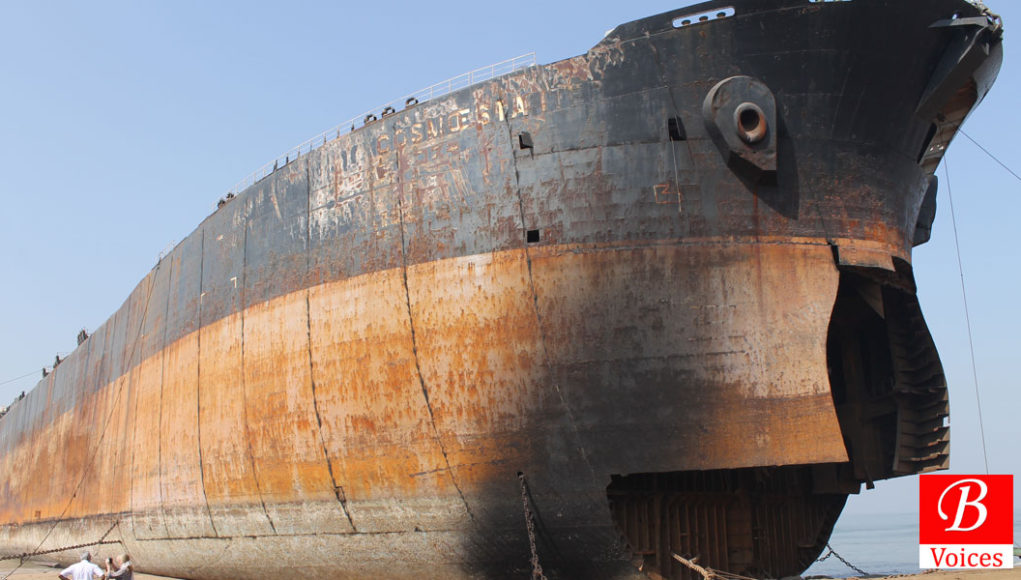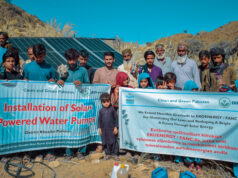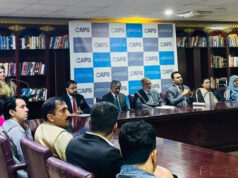Ayaz Khanzada
Heavy metal wreckage of gigantic ships, scattered over 10 km long beachfront, looks like a long-iron-made barrage built to prevent uprising waves of the ocean. The view of the world’s third largest ship-breaking yard at Gaddani is arresting, but the world which lies inside the breaking yard has excessive stories to tell about the plight of workers. Toiling workers accept the challenge to play a life and death game and are paid peanuts in return for risking their lives.
Workers do not seem going to lean in the dark sans proper safety measures, but poverty hurtles them to put their lives at stake. Workers, stripped of required equipment, hiding their faces with a piece of cloth, which might be proved a wall of sand to prevent them from asbestos particles, and wearing gloves often torn, embark on the hazardous ship-breaking mission without safety tools.
Toiling workers accept the challenge to play a life and death game and are paid peanuts in return for risking their lives
With the growing globalization, modern equipments have shrunk the work places for workers. Gadani ship-breaking yard depicts a similar story of apathy. In 1980, the world’s first largest ship-breaking yard accommodated 30,000 workers; however, currently, it is livelihood to a paltry work force comprised of 6,000 workers approximately. Though, workers work under the umbrella of a strong labour union, yet safety measures remain their prime concern.
“In 2010, approximately, 30 workers lost their lives owing to lack of safety measures,” says Basheer Baloch, head of the labour union of ship-breaking yard.
Gadani ship-breaking yard, like other industries, depicts a tale of sheer violation of international laws, enacted to insure safety of workers at work places. Instead of signing Ratifying Basel Convention 1994 and Rotterdam Convention 2005, ship-breaking Industry remains oblivious of providing proper safety measures to its workers.
In 1980, Gaddani ship-breaking yard accommodated 30,000 workers and currently it only accommodates a work force of 6,000 workers approximately
The Factories Act, the most effective law to assure workers safety plus their healthy hygiene, promulgated in 1934. The Factories Act had a comprehensive ground to intact workers’ health and safety. Most integral part of the law was that it enabled inspection system wherein inspectors visited working places annually and made sure that safety and health facilities are available to workers. In Zia regime, the inspection body of the law was kept in abeyance and ten years later retired Air Marshal Noor Khan’s Industrial Relations Ordinance (IRO) put a full stop to all laws that attempted to ease workers’ affliction. Similarly, The Shops and Establishments Ordinance, which was enforced in 1968 also guarantees basic rights for workers such as holidays and leave but, like Factories Act, it is seen nowhere in practice.

As a story having two sides, other side of the coin might tell another tale of negligence. If workers suffer from repressive laws and lack of safety measures, on the other hand, their lack of awareness and negligence contribute to their plight too.
“We provide workers with every safety measure ranging from health to accommodation. If they are not willing to use helmet and safety equipment, they suffer injuries and it even causes them their lives,” explains Anwar Rind, Superintendent of Sub divisional Labour Department Hub.
“Workers are provided with sophisticated health facilities in both special and ordinary cases. In special cases i.e losing any body organ or eye etc, they are treated in Aga khan hospital,” claims Mr. Anwar Rind.
Working at Gadani ship-breaking yard is neither seasonal nor permanent; therefore, workers often resort to brouhaha for their permanency in work. Workers can find livelihood until there is a ship for scrap, as the scrap work finishes they are allowed to leave for home or find another plot to work at.
At Gaddani Beach, sun rises with a blissful and picturesque day for the visitors, but it often sets with a sorry tale of workers’ plight at world’s third largest ship-breaking yard.
Writer is a student and pursuing his masters from University of Karachi. He is an avid reader.
Photo Credits: NGO Shipbreaking Platform
Share your comments!








